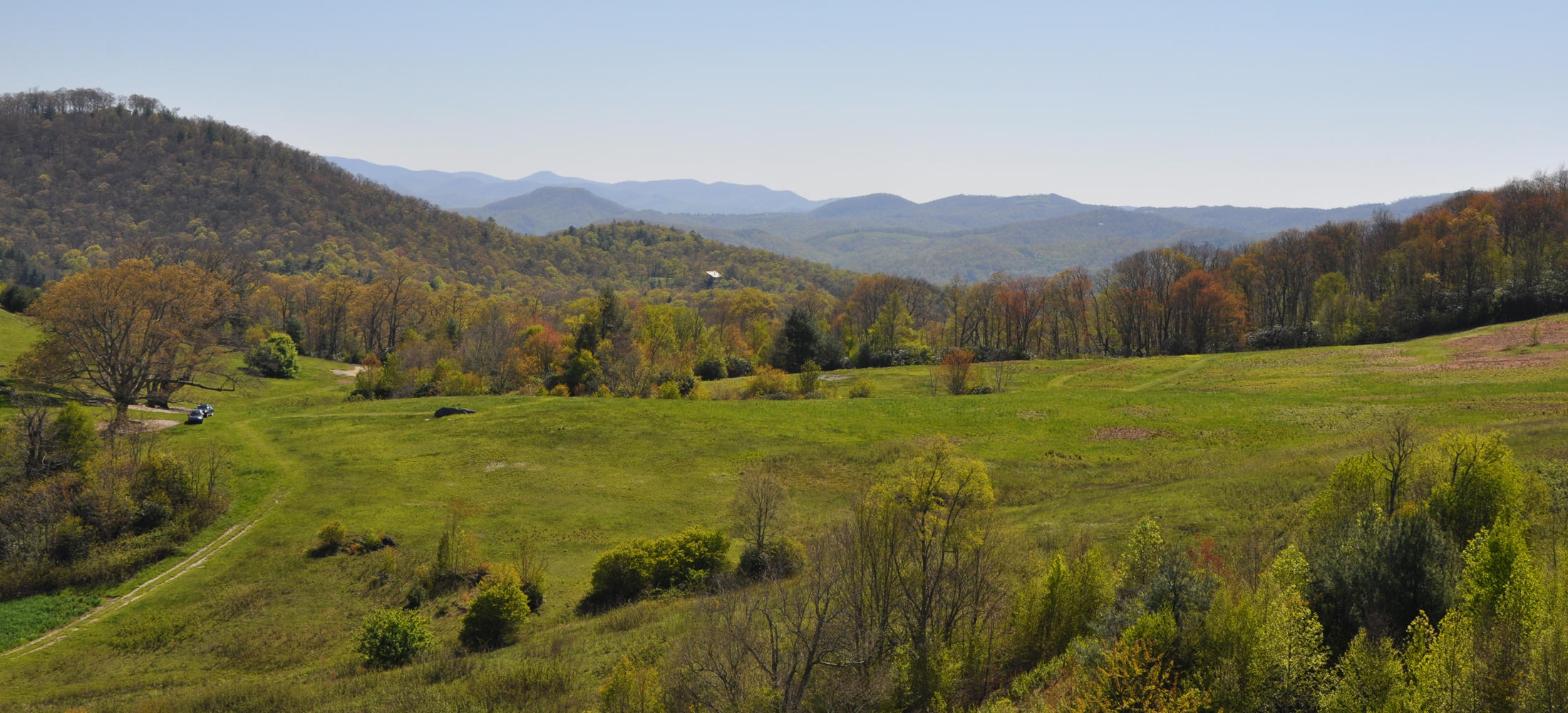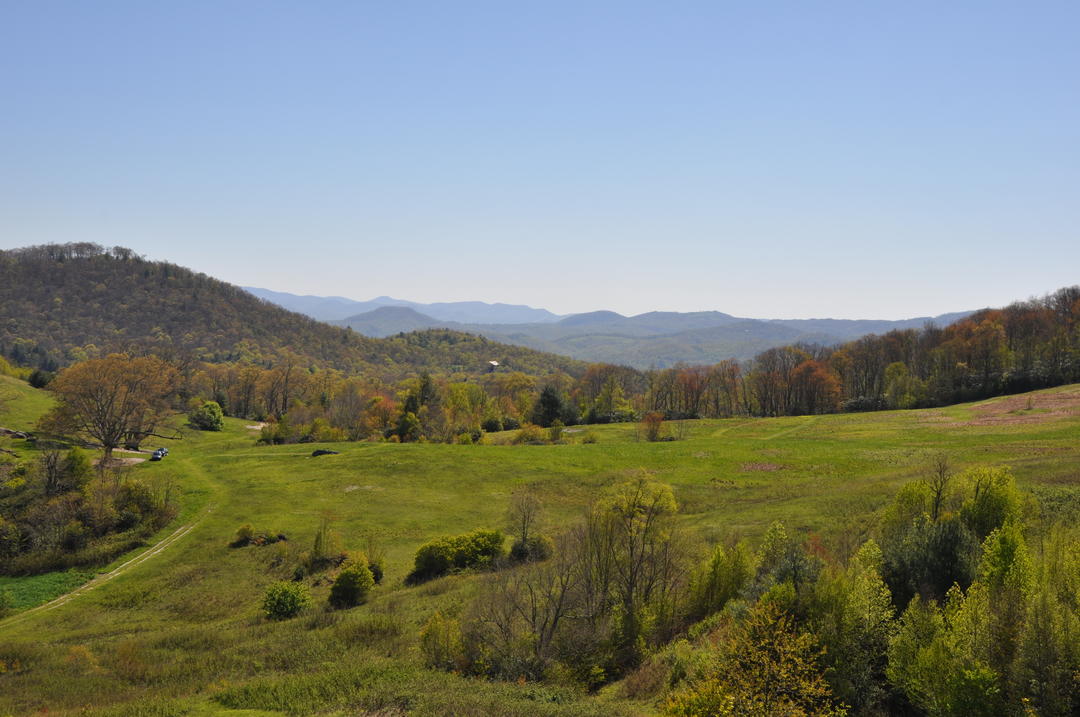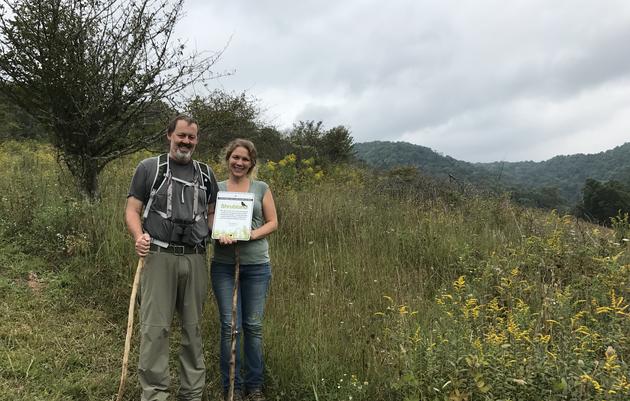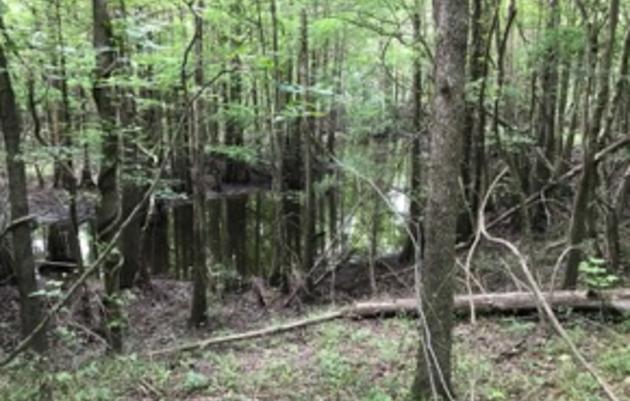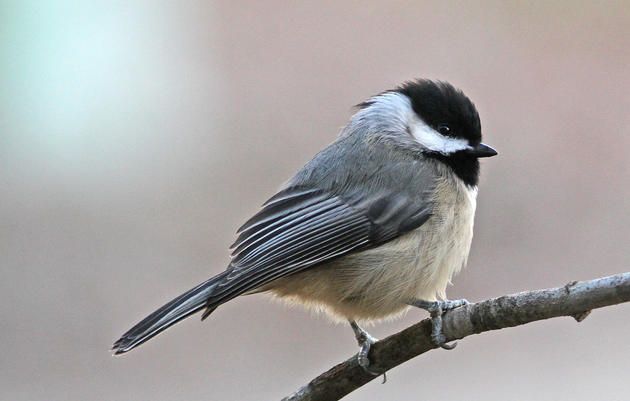Our Working Lands program takes a collaborative approach to forest management: together with local landowners, land managers, government agencies, and private industry, we’re restoring essential forest habitat for priority bird species like the Wood Thrush, Cerulean Warbler, and Golden-winged Warbler across North Carolina.
Thank you for thinking about our birds on the property you own or manage!
Q: I'm a forest landowner and I'd like to manage some of my land to help birds. What can I do?
A: Birds that use forests often need a variety of micro-habitats: by allowing for a mix of “structure” in your forest layers, you can help increase the number and kinds of birds on your property. At ground level, allow for heavy leaf litter, clumpy areas of shrubs and saplings, and smaller trees waiting their turn to fill holes in the mature tree canopy. This approach is even more important if your forest is surrounded by non-forest. We encourage all of these plants to be native species that produce a variety of fruits, nuts, and yummy caterpillars for hungry baby birds!
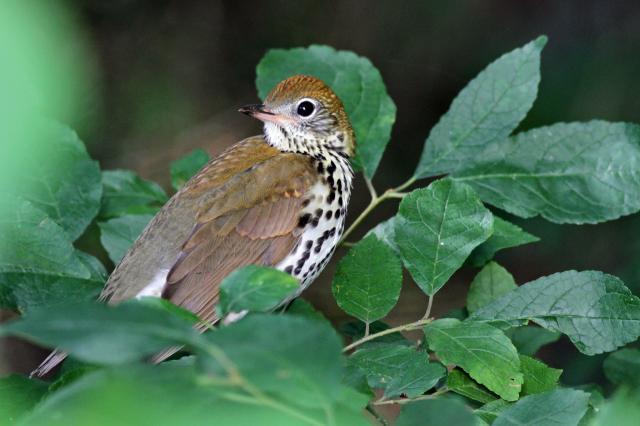
Q: How much land should I put towards management for helping birds?
A: While all habitats are not created equal, any habitat can be made better for birds by keeping and adding native plants, water features, feeders, and nest boxes. Improving larger blocks of natural habitats like forest, grassland or wetlands can be more complicated, and more successful with the help of a professional.
If you’re a landowner interested in accessing funding to support environmentally sound practices- especially those that benefit birds- get in touch by emailing atomcho@audubon.org.
Q: What strategies can I use to attract different birds to my property?
A: Birds want food, water, shelter, and safety (like any living thing). Using native plants to produce seeds, nectar, insects, nuts, and fruits is a great way build a solid foundation. Maintaining multiple layers of ground cover, shrubs, saplings, and mature trees on your land can also help a great deal in forested habitats. Allowing your grasslands to be unmowed for at least 6 weeks sometime between May 1st and July 20th can help grassland nesters. Leaving some areas, even small ones like fence rows, unkempt with weeds, briars and tangled native vines can provide feeding, nesting and roosting locations away from predators and can help attract birds that like those open areas with complicated structure.
Some species are harder to attract because their needs are larger than what most of our yards can provide. Certain forest birds like the Wood Thrush, for instance, want large blocks of unfragmented forest in which to raise young. But these tend to be rarer, and most of our land can support dozens of species if steps like the above are taken to provide basic necessities!
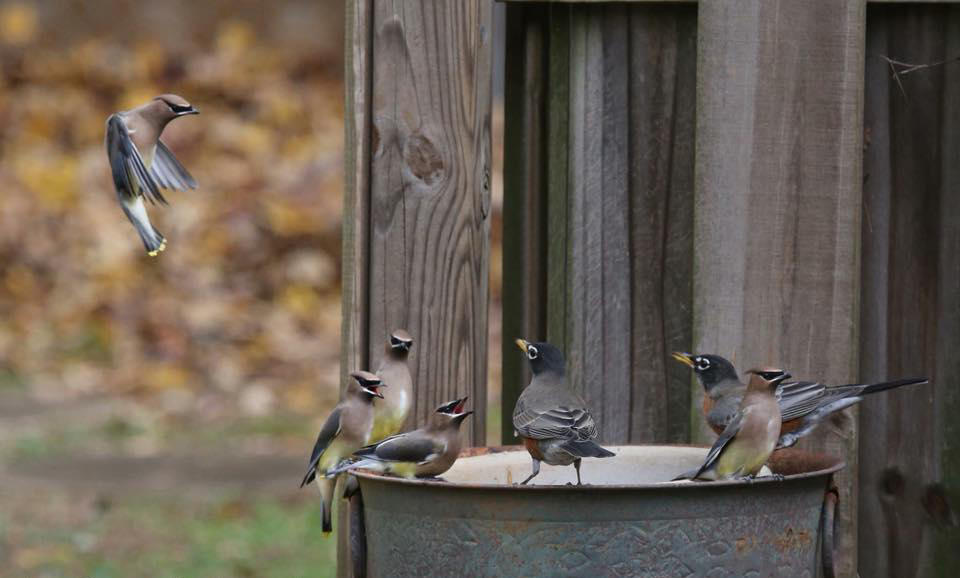
Q: Can I attract any species of bird to my property?
A: The basic premise of attracting birds to any location is in providing the resources that a particular species (or group of species) is looking for to feed, rest or raise young. Some species are hard to attract because their needs are based on a scale larger than most of our own yards and properties.
As an example, certain forest birds like Wood Thrush and Cerulean Warblers want large blocks of unfragmented forest in which to raise young. While we might be able to attract them if our land is big enough, or we are surrounded by similar habitat on neighboring property, it is often hard for an individual landowner to provide enough habitat to attract these area-sensitive species. But those tend to be the rare species, and most of our land can support dozens of species, if simple steps are taken to provide the basics.
Q: Who should I contact for advise on improving my land to help birds?
A: Audubon partners with state and federal organizations on the Forest Landbird Legacy Program, including US Fish and Wildlife Service, NC Wildlife Resources Commission, NC Forest Service, and the Natural Resources Conservation Service, to help you manage your mature forest. Each county in NC has a NC Forest Service Ranger assigned to it as well as a soil conservationist and agricultural extension professional who can help you get a plan and provide help. Reach out to our forester for more information on these and other partner programs that may be of assistance to you.
Q: What threatened birds can benefit from forest management?
A: Two that can benefit directly from deliberate management of the forest are the Golden-winged warbler and Cerulean Warbler. On the coastal plain, your pine forest might also support the federally listed Red-cockaded Woodpecker through Long Leaf Pine restoration efforts. In the southeast corner of the state, your bottomland might attract the federally listed Wood Stork or Swallow-tailed Kites. Most of these species are geographically restricted in North Carolina, so contact our forester for more details to see if you are in the right place to have these species as part of your planning and management efforts.

Q: What is a snag and how do you make one?
A: A snag is any portion of a tree that has died. Snags provide suitable locations for our woodpeckers and other species to create cavities for nesting and roosting. They are then used by other species that need cavities but can’t excavate them on their own.
The best way to create snags is to keep what nature has already made, rather than cutting them down. However, snags near your house or over your road or paths should be removed or monitored closely. We usually recommend having about 6-10 snags per acre, so if you find that you don’t have that many you can easily create them.
The first step is to pick a suitable tree or limb on a tree then girdle the tree or limb by cutting through the bark layer (about an inch deep) all the way around about a foot apart. Over time, the tree or limb will die and heart rot fungi will form, making the wood soft so those primary excavators can find it and use it.
Q: Are prescribed burns good for birds?
A: In general, prescribed fire can be beneficial and in some ecosystems, like long leaf pine, they are essential to maintaining the habitat. Often the burning is part of maintaining a system and is usually low-intensity to remove understory vegetation. In general, these maintenance burns will enhance the productivity of the habitat but not result in the wholesale change of the habitat from one type to another. Fire often causes a flush of new nutrients into the system, enhancing the growth of new vegetation and often increasing the use of the area by birds. For more, see our recent blog post.
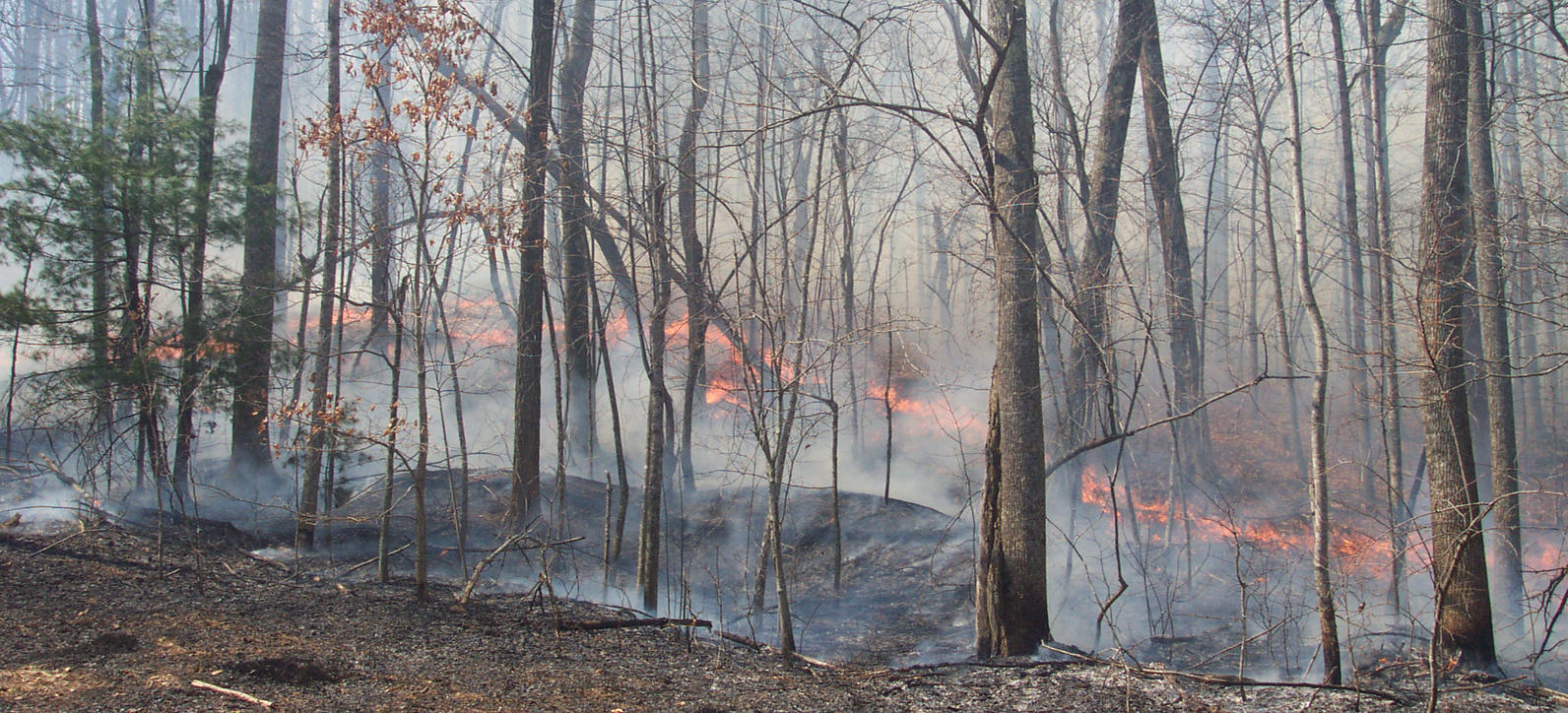
Q: Is it safe to mow my fields if I often see birds flying in and out of the grasses?
A: There are many species that thrive in grasslands and weedy fields, as they provide good cover to build a nest and raise young. Mowing can leave nests in these fields vulnerable or can even remove a field from potential use if the mowing is done at the wrong time or too frequently. In general, if a field is used for hay or grazing and is greater than 5 acres it should have a period of no mowing that is at least 6 weeks long during the height of the breeding season to maximize bird use and success. In North Carolina that is about May 1st through mid-July. Selecting a 6-week window during that period where the field will not be disturbed by mowing, fertilizing or other mechanical treatment will give birds a great chance to succeed. This also benefits pollinator insects, which birds depend on for food during the nesting season.
Q: I have a lot of land and a lot of mosquitos, which birds can help and how do I attract them?
A: Almost all birds eat insects at least part of the year, so encouraging any species can help with insect control on your land. Birds that eat smaller flying insects more than others include swallows, swifts, and the flycatcher species. Many of these species readily use human structures for nesting, so you can provide nest boxes for Tree Swallows, shelves, ledges and open structures like barns for Barn Swallows, Chimney Swift nesting towers, Purple Martin houses and gourds and allow Eastern Phoebes to use your porches and barns for nesting. Ensuring you don’t have a lot of places with small amounts of standing water (old pots, tires, cluttered gutters) can also cut down mosquito presence.
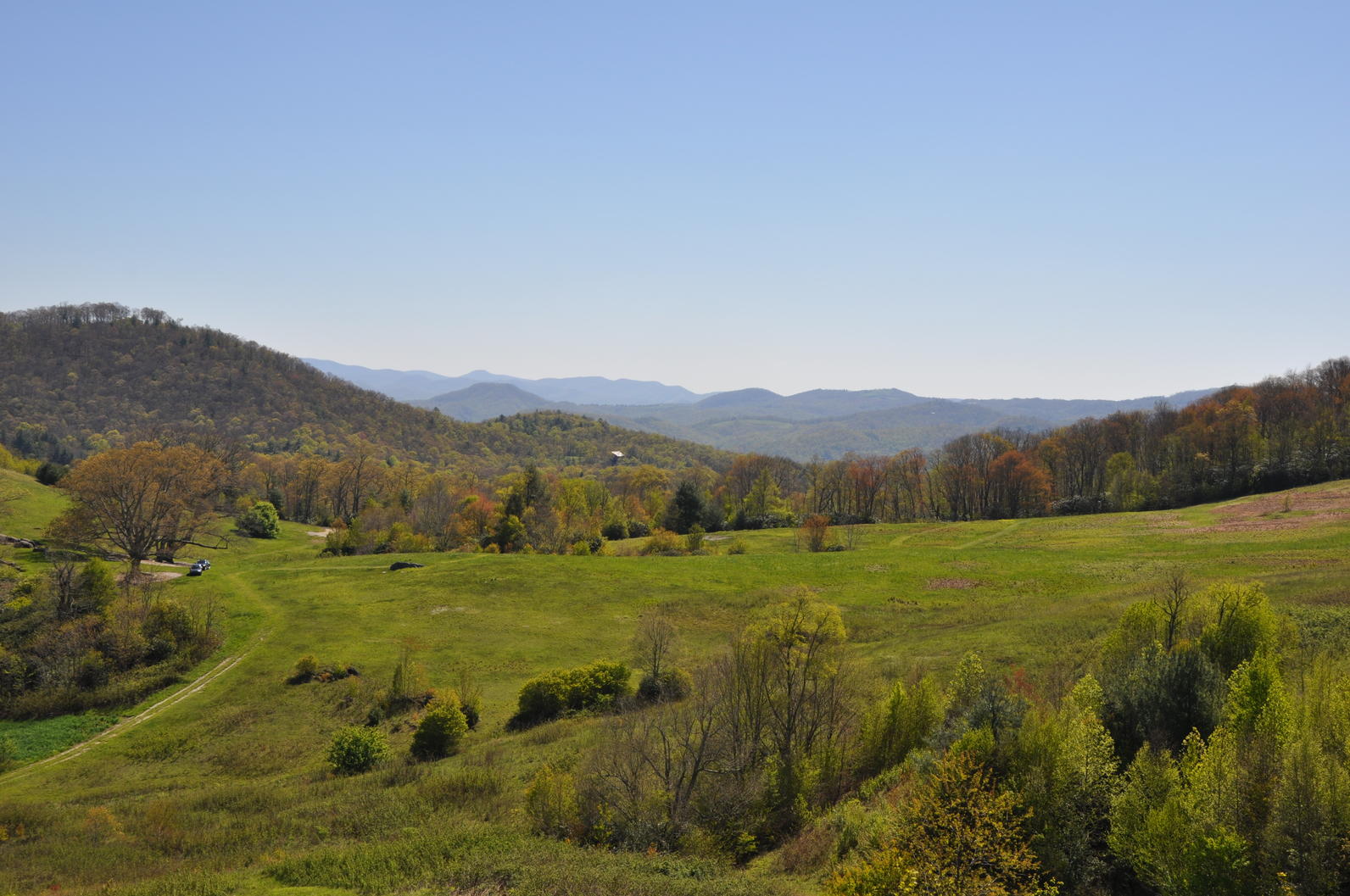
Q: If I cut down a bunch of trees on my property, will it really harm the birds?
A: It depends. When a space is clear cut, the birds that have been using it won’t be able to come back the next nesting season, forcing them to move into a new location and compete with the existing birds in that space. On the other hand, species that like this kind of open habitat will move in and exploit the new opportunities.
The challenge is that much of the pressure on our forests is a trend toward fragmentation; many of those birds that need large blocks of forest are declining and may disappear from areas with too much development or young forest. Audubon is working with landowners to have less of an impact by conducting forest improvement activities that maintain a higher percentage of forest cover while still allowing for some partial harvests. Learn more about the Forest Landbird Legacy Program here.
Q: I see Audubon North Carolina supports a Chainsaw Safety Course for women. What does this have to do with birds?
A: One of the best ways Audubon North Carolina can protect birds and the places they need is to work with private landowners to steward their forest with birds in mind. The number of women owning woodlands individually or in joint ownership is growing, thus increasing their ability to make decisions about as much as 65 percent of North Carolina forests. With our Forest Landbird Legacy Program, Audubon offers technical guidance for bird-friendly forestry. While maintaining contiguous mature forest blocks is important, interior-dwelling songbirds seek structural diversity within the stand that can be formed by introducing small canopy gaps and creating snags (standing dead trees) with the safe use of a chainsaw. This small-scale forestry work, often called single-tree selection, increases the number of bird species a forest can support.
Q: I'm interested in volunteer opportunities to support your work. How can I help?
A: Please let us know you are interested in joining our working lands stewards group by contacting our forester. Our stewards help assess private landowner tracts for improvement, conduct species specific surveys like Golden-winged Warbler surveys, help with hands-on projects for habitat improvement and help us advocate for policies and regulations that help landowners do good bird-centric work on their lands.

